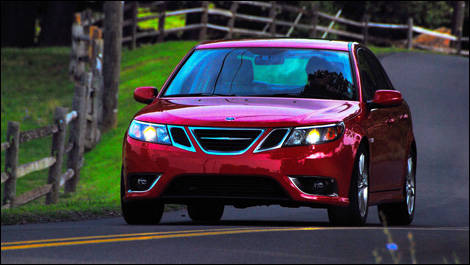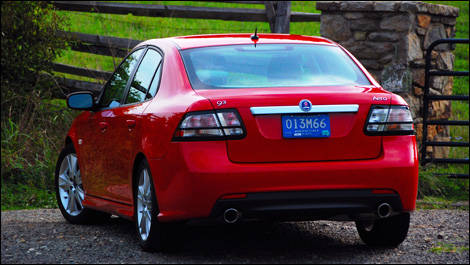Washington, D.C. - After returning from the launch of the 2008 Saab 9-3, a friend of mine noted that the Swedish import is the preferred ride for architects. While this was somewhat surprising - I would've thought the Audi TT would top the list - it also makes a certain amount of sense.
For a long time now, Saab has positioned the 9-3 as a sporty and stylish European car and an alternative to the segment's more obvious choices - particularly, BMW, but also Audi and Mercedes-Benz.
Still, there's a reason why certain cars are more obvious choices. And in order for Saab to increase sales, cars like the new 9-3 have to offer a combination of performance, style and value that make more sense to more people - including those working outside the field of architecture. Let's see if they were successful.
A Perfect Country Drive
For the drive program, there were a number of new models on hand to drive. For comparison purposes, we focused on three: the base 9-3 sedan (powered by a 2.0-litre turbocharged 4-cylinder engine) and the 9-3 Aero sedan (featuring the 2.8-litre turbocharged V6 engine), one version with the 6-speed manual and the other with the optional 6-speed automatic.
(Also in the fleet was the SportCombi wagon; the convertible, which will arrive in dealerships about a month later than the other versions of the 9-3, was not present.)
While we didn't have a massive amount of time to explore the capabilities of the 9-3, the roads in rural Virginia were more than up to the task: two-lane routes with plenty of bends, hills and silky smooth pavement.
Motoring across such a picturesque setting, the temptation was to really put your foot into it - and that's precisely what we did. With little traffic to contend with and an open road in front of us, it was the perfect day for a quick country drive. Amid such circumstances, the new Saab 9-3 proved a willing companion.
Turbocharged Fun Down the Line
All versions of the Saab 9-3 are fitted with high-output, twin-scroll turbochargers that feature intercoolers for more consistent performance.
With its 210-horsepower 4-cylinder, the base sedan offers decent acceleration with minimal turbo lag. Paired with a somewhat ropey 5-speed manual transmission, the Saab allows drivers to extract a reasonable amount of fun from the 221 lb-ft of torque.
For a long time now, Saab has positioned the 9-3 as a sporty and stylish European car and an alternative to the segment's more obvious choices - particularly, BMW, but also Audi and Mercedes-Benz.
 |
Still, there's a reason why certain cars are more obvious choices. And in order for Saab to increase sales, cars like the new 9-3 have to offer a combination of performance, style and value that make more sense to more people - including those working outside the field of architecture. Let's see if they were successful.
A Perfect Country Drive
For the drive program, there were a number of new models on hand to drive. For comparison purposes, we focused on three: the base 9-3 sedan (powered by a 2.0-litre turbocharged 4-cylinder engine) and the 9-3 Aero sedan (featuring the 2.8-litre turbocharged V6 engine), one version with the 6-speed manual and the other with the optional 6-speed automatic.
(Also in the fleet was the SportCombi wagon; the convertible, which will arrive in dealerships about a month later than the other versions of the 9-3, was not present.)
While we didn't have a massive amount of time to explore the capabilities of the 9-3, the roads in rural Virginia were more than up to the task: two-lane routes with plenty of bends, hills and silky smooth pavement.
Motoring across such a picturesque setting, the temptation was to really put your foot into it - and that's precisely what we did. With little traffic to contend with and an open road in front of us, it was the perfect day for a quick country drive. Amid such circumstances, the new Saab 9-3 proved a willing companion.
Turbocharged Fun Down the Line
All versions of the Saab 9-3 are fitted with high-output, twin-scroll turbochargers that feature intercoolers for more consistent performance.
With its 210-horsepower 4-cylinder, the base sedan offers decent acceleration with minimal turbo lag. Paired with a somewhat ropey 5-speed manual transmission, the Saab allows drivers to extract a reasonable amount of fun from the 221 lb-ft of torque.
 |




